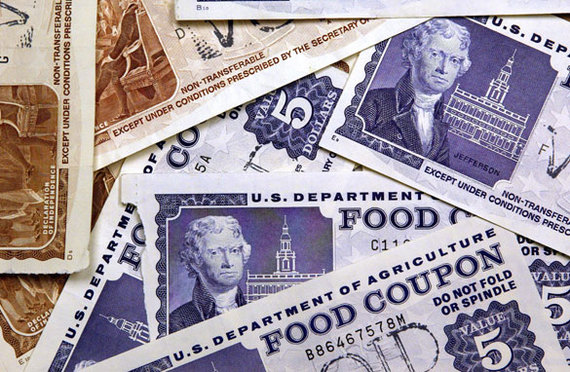Dear Savvy Senior,
I run a community counseling program for needy families and am frustrated that so few eligible seniors take advantage of the food stamp program. Can you write a column on this to help educate seniors to this underutilized benefit?
--Reaching Out
Dear Reaching,
It's hard to imagine that a government program serving more than 46 million Americans each month is considered severely underutilized. But that's the reality of the federal Food Stamp Program when it comes to serving seniors.
Nationwide, food stamps (now called the Supplemental Nutrition Assistance Program, or SNAP) reaches around 80 percent of those eligible, but the numbers are much slimmer among the seniors, age 60 and older. Recent statistics indicate only 39 percent of eligible seniors receive SNAP benefits.
There are a number of reasons for the lack of participation. Some seniors are too embarrassed or too proud to apply. Others think that if they receive SNAP they will be taking food benefits away from others (which they won't). Some think it is too difficult to apply for SNAP, and others don't even know the program exists.
With all that said, here's a run down of which seniors are eligible for SNAP, what they get and how they can apply.
Who's Eligible?
For seniors to get SNAP, their "net income" must be under the 100 percent federal poverty guidelines. So, households that have at least one person age 60 and older, or disabled, their net income must currently be less than $958 per month for an individual or $1,293 for a family of two (these amounts are higher in Alaska and Hawaii). Households receiving TANF or SSI (except in California) are also eligible.
Net income is figured by taking gross income minus allowable deductions like medical expenses that exceed $35 per month out-of-pocket, and shelter costs (rent or mortgage payments, taxes and utility costs) that exceeds half of the household's income.
In addition to the net income requirement, a few states also require that a senior's "assets" be below $3,250, not counting the home, retirement or pension plans, income from SSI or TANF, and vehicle (this varies by state). Most states, however, have much higher asset limits or they don't count assets at all when determining eligibility.
The SNAP pre-screening tool at www.snap-step1.usda.gov/fns can help seniors, and their family members, figure out if they qualify.
To apply, seniors or an authorized representative will need to fill out a state application form, which can be done at the local SNAP office or it can be mailed or faxed in, or in many states it can be completed online.
If eligible, benefits will be provided on a plastic card that's used like a debit card and accepted at most grocery stores.
Depending on the person's financial situation, the amount of SNAP a beneficiary may be eligible for will range between $15 and $189 per month as an individual, or $15 to $347 for a family of two (these amounts are higher in Alaska and Hawaii).
To learn more or apply, contact your local SNAP office -- call 800-221-5689 for contact information or visit www.fns.usda.gov/snap.
Produce Coupons
In addition to SNAP, the Senior Farmers' Market Nutrition Program is another underused program that provides coupons that can be exchanged for fresh fruits and vegetables at farmers' markets, roadside stands and community supported agriculture programs.
This program is currently available in select counties in 43 states, seven Indian reservations, the District of Columbia and Puerto Rico, to seniors, age 60 and older, with gross monthly household incomes below 185 percent of the federal poverty line, which is currently below $1,800 for individuals, or $2,426 for a family of two (except Alaska and Hawaii). For more information visit www.fns.usda.gov/sfmnp or call 703-305-2746.
Other Programs
Seniors that are eligible for food assistance may also be eligible for a host of other programs that can help pay for medications, health care, utilities and more. To locate these programs, visit benefitscheckup.org, or call the Eldercare Locator at 800-677-1116.
Send your senior questions to: Savvy Senior, P.O. Box 5443, Norman, OK 73070, or visit SavvySenior.org. Jim Miller is a contributor to the NBC Today show and author of "The Savvy Senior" book.

